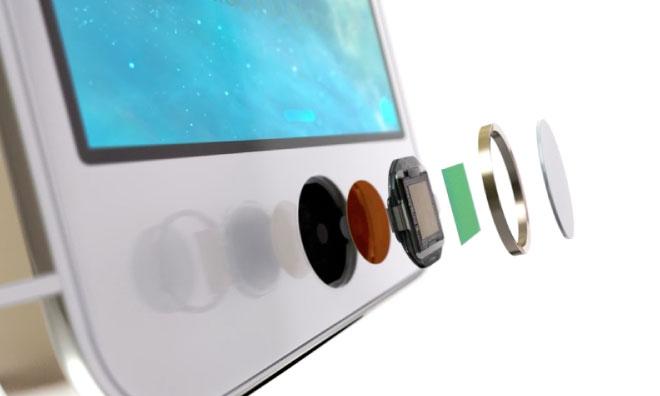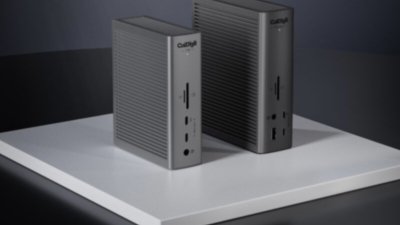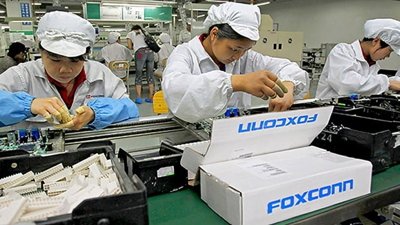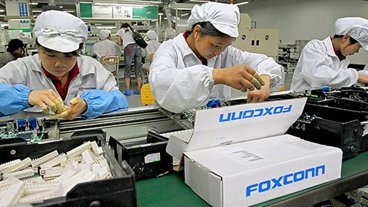GT Advanced Technologies, the sapphire manufacturer with which Apple has a multi-million-dollar deal, reportedly began shipping small quantities of sapphire to one of Apple's manufacturing partners in China last month, gearing up for mass production later this year.
Analyst Stephen Chin of UBS cited his supply chain checks in revealing that GT's Arizona facility apparently started producing sapphire last month, he said in a new note to investors this week, a copy of which was provided to AppleInsider. GT's initial production level was said to be small, utilizing just 100 furnaces that are believed to be turned on and running.
The Arizona facility is expected to ramp up with installation of some 1,500 additional furnaces in the first half of 2014.
Chin estimates that GT shipped only about $1 million worth of sapphire to a China supplier last month. He believes Apple's partner in China will be receiving about $50 million in sapphire materials every month once the Arizona facility is fully operational.
The unnamed partner is believed to be utilizing the limited shipment of materials for scratch-resistant covers found on the iPhone 5s Touch ID home button and rear camera lens cover. Because shipments have been so limited, GT Advanced is said to currently represent a small portion of sapphire suppliers.
Just last week, GT confirmed that it received a third prepayment for Apple for sapphire supply, and Chin estimates that the company will receive its fourth and last prepayment for materials in May.
His checks indicate that sapphire from GT has been sold at a price 25 percent lower than the other sapphire suppliers Apple has largely been relying on. Chin has high hopes for GT Advanced's partnership with Apple, and recommends that investors buy GTAT stock, with a 12-month price target of $22.
AppleInsider was first to report in March that GT Advanced is expanding operations at its Mesa, Ariz., facility, potentially to accommodate higher yields for an as-yet-unknown component. Documents supplied to the U.S. International Trade Administration in January suggested Apple was moving to aggressively ramp production of a "critical" sapphire component by the end of February, and that the material would be shipped outside the U.S. for final assembly.
Sapphire, a crystalline form of aluminum oxide, can also be used to create an advanced virtually unscratchable alternative to silicon dioxide conventional glass. It's a potential alternative to Corning's potassium-enhanced Gorilla Glass, which Apple currently uses in its iPhone screens. Sapphire can be made thinner, and therefore lighter, but has historically also been more expensive.
Apple first began experimenting with manufactured sapphire with the iPhone 5, when it used the material as a cover for the rear-facing camera. With the latest iPhone 5s, Apple's use of sapphire has been extended to a more critical and functional role as cover glass for the Touch ID fingerprint sensor.
In order to secure sapphire supply, Apple inked a $578 million deal with GT Advanced last November. The investment was a prepayment funding the accelerated development of a "next-generation, large capacity" advanced sapphire furnace in Arizona.
 Neil Hughes
Neil Hughes







-m.jpg)






 Andrew Orr
Andrew Orr
 Andrew O'Hara
Andrew O'Hara
 William Gallagher
William Gallagher


 Mike Wuerthele
Mike Wuerthele

 Charles Martin
Charles Martin









34 Comments
Is Corning reading this?
It is also well established as a material for building whale-sized aquariums. Known in some circles as "transparent aluminum", the synthetic sapphire debuted to the mass market in StarTrek4: The Voyage Home, and was schematized on a Macintosh. Of course. :)
It is also well established as a material for building whale-sized aquariums. Known in some circles as "transparent aluminum", the synthetic sapphire debuted to the mass market in StarTrek4: The Voyage Home, and was schematized on a Macintosh. Of course. :)
So... Apple mastered transparent Aluminium too!
[quote name="AAPLfanboy" url="/t/178978/sapphire-production-for-apple-reportedly-underway-with-100-furnace-trial-at-arizona-facility#post_2525095"]Seems pointless using this plant to supply sapphire glass parts for 5s when obviously Apple has enough to meet demand from elsewhere already.[/quote] Can you elaborate?
It must be for an iPod touch, not an iPhone. Clearly. /sarcasm